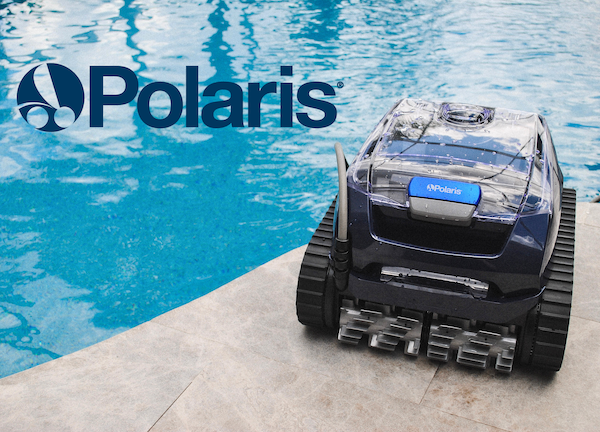How To Get Rid of Algae in Your Pool
Of all the things to ruin a perfect pool day, algae is one of the worst! Green-tinted water is a tell-tale sign that your pool needs shock treatment from a pro.
Definitely not what you want to see in your pool when you get ready to dive in, algae are commonly found in large bodies of water. Swimming pools are regularly treated with chemicals to provide a sparkling oasis, not an algae pond.
A skimmer won’t help you get rid of the multi-colored menace. Instead, you’ll have to call a professional to clean your green pool.
We’re taking a peek into the murky world of pool algae today. We’ll discuss what it is, how to prevent it, and steps to eliminate it.
Dive in. The water’s fine!
What types of algae can get in your pool?
Several common types of algae might infest your pool. Each of these unique flora grows at a different rate and requires a different method to kill off. For some of them, stopping growth is only part of the battle. Removal can be a headache!
Green algae is always common to find in pools
By far, the most common pool blight is green algae. Characterized by a bright green bloom, you might be confused at first by its beautiful colors. Starting out teal green, it progresses to darker green and then black.
When you first notice your pool taking on a green tint, deal with the algae before it gets out of hand. It usually forms on the bottom of your pool and is the easiest to remove out of the three.
Mustard algae is found in humid conditions
This nasty bloom appears around the edge of your pool as yellow or mustard algae. The biggest issue with these gnarly blobs is that they’re resistant to chlorine. When they show up in the shady sections of your pool, you’ll have to treat them with a different combination of chemicals.
Black algae is troublesome to deal with when in the pool
Like its moldy cousin, black algae is the most troublesome of the three. Also known as blue green algae, it’s pernicious and damaging. Left unchecked, black algae can even damage the structure of your pool.
It’s easy to spot, if not easy to kill, as it grows on the bottom of your pool. First blooming as black speckles on the pool floor, it moves rapidly throughout the water.
How does algae grow in a pool?
You might have a pristine-looking pool one day and, the next, a black lagoon. Algae is a fast-growing problem that can pop up seemingly out of nowhere. Algae spores can transfer from contaminated beach toys and swimwear easily.
A couple of factors contribute to an algae bloom.
Your pool was lacking proper maintenance
The most significant factor in an algae bloom is poor pool maintenance. Without regular upkeep, you’re practically inviting an infestation. You must maintain chlorine levels and check the filtration system regularly.
The pool could have been affected by external factors
Life near a large body of water might be sweet, but it can affect your pool too. Wind may blow spores into your pool, introducing the issue. Lots of rain can dilute the chemicals, and storm debris gives algae a place to grow.
Common ways to get rid of algae in your pool
Pool experts have several approaches to pool algae removal. Most agree that it takes multiple methods to entirely eradicate an infestation from your pool.
Shocking your pool routinely will drastically improve your pool
Introducing a large amount of calcium hypochlorite to your pool to kill off any critters. On average, 2 pounds per 10,000 gallons is enough for green algae. Shocking regularly will maintain chemical levels through the hottest days of the summer.
Different types of algae require different amounts of pool shock. You’ll need up to three times the average amount for mustard algae and four times the dose for black.
Test your water, keep it balanced
Chemicals are regularly introduced into the water as a pool cleaner. Testing the water in your pool is the most crucial first step in stopping an algae infestation. Use your water test kit to make sure that chlorine levels are correct. The pH of the water also needs to be between 7 and 7.6 for optimal sanitization. Chlorine stabilizers prolong the life of the chemical and should also be present.
You can use pool algaecide in your cleaning routine as well. These products use specific chemicals to kill off each unique type of algae, so make sure to use the right one.
Your pool filter needs a lot of cleaning after algae
If you shut your filtration system down when the pool isn’t in use, turn it back on! Proper circulation makes it harder for algae to grow. Since it’ll have algae spores in it, either soak your filter in a 50/50 water and vinegar solution or replace it after a bloom. A clean pool filter is essential for removing algae.
Your pool vacuum and pool pump will need a thorough cleaning during this process. They collect the spores that can quickly transfer back into the water. Once you’ve killed off the bloom, ensure not to reinfect by leaving these tools off the cleaning list!
Backwashing your pool filter may help dislodge any material stuck in the system and might keep a repeat at bay.
Physically clean your pool by scraping the walls and floor
Use a pool brush to scrape down the walls, floor, and areas around your pool. Once you’ve cleaned every surface, get on a regular schedule. Brushing dislodges any debris that might give algae spores a place to hide.
If it’s too tall a task, call professionals to help clear the pool
When things have gone too far, and you’re unable to take care of the problem on your own, call the pros! We’re here to help you maintain your pool and remove pool algae. Regular maintenance is essential to a properly functioning pool. If you’re too busy to do the work consistently, pool companies can maintain chemicals and filters for you.
GPS Pools is here to keep your pools clean and algae free!
At GPS Pools, we’re experts at killing off the bugs that can ruin your pool day. With our highly trained team on your side, wasted sunny days are a thing of the past. Schedule regular service with us to maintain your pool throughout the year. And if you’ve waited too long, we’re your pool algae removal crew!
Algae is a part of life that doesn’t have to be part of your pool. Swim on over to our website to schedule a call or visit today!

